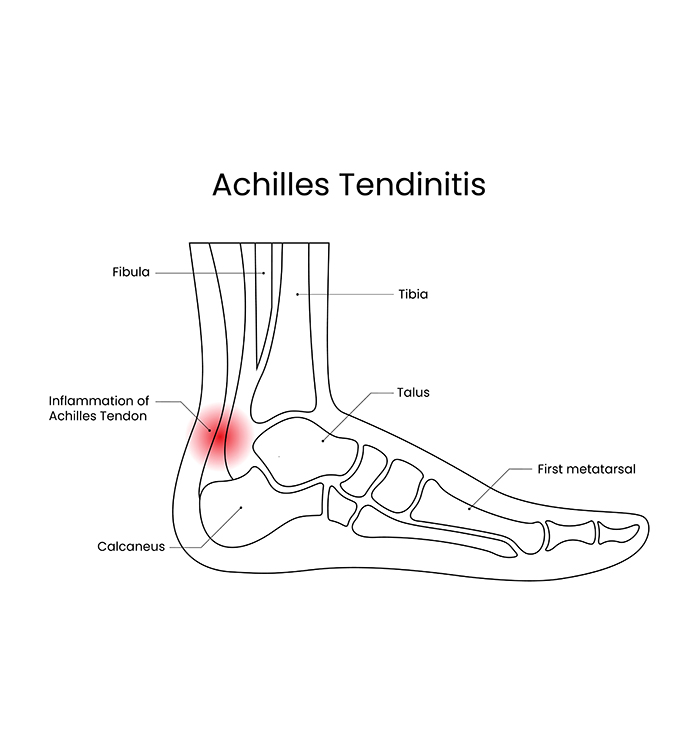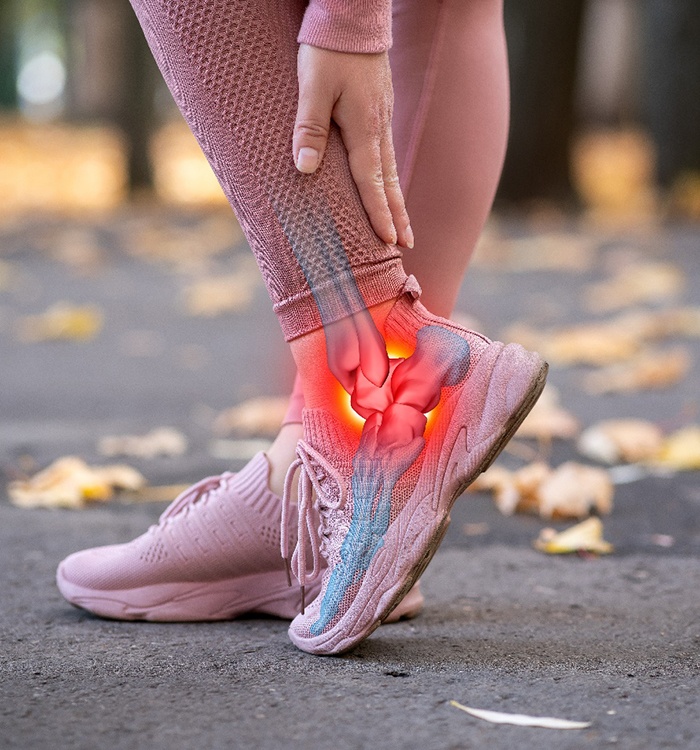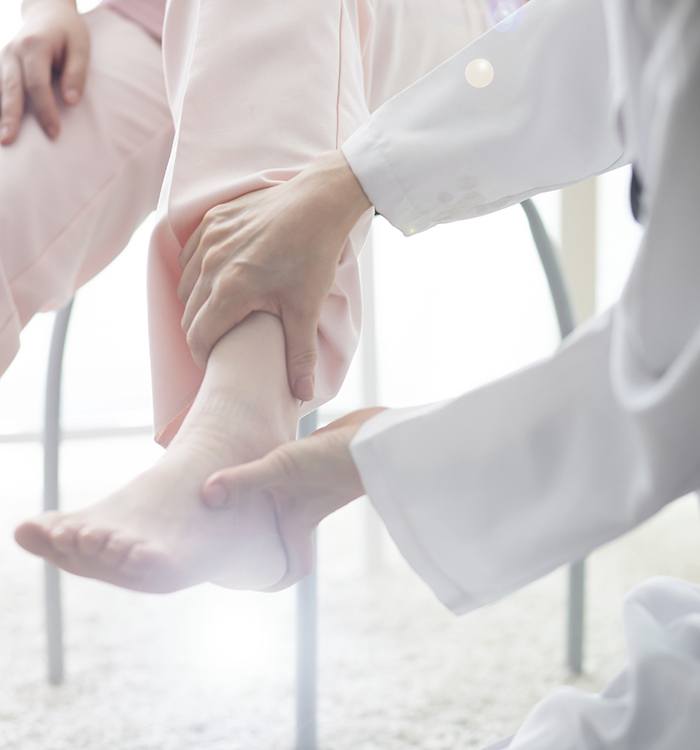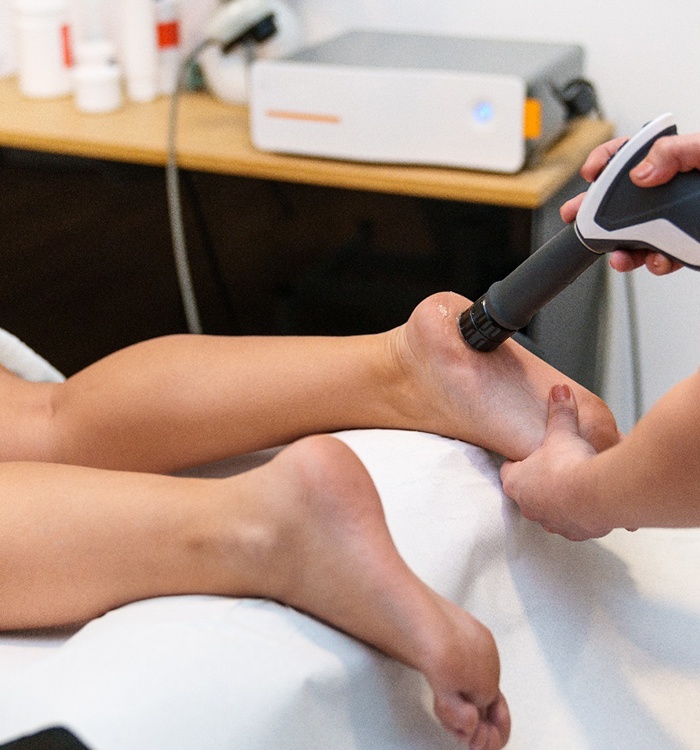
Achilles Tendonitis – Asheville, NC
Treat the Pain and Get Moving Again
According to one estimate, nearly one-quarter of athletes will suffer an injury to their Achilles tendon in their lifetime. One of the most common types of damage to this tendon is known as Achilles tendonitis. If you believe you have this condition, our Asheville, NC, team is here to help you treat the pain and get moving again! Continue reading below, and then get in touch with us when you are ready to book a consultation.
What Is Achilles Tendonitis?

Your Achilles tendon is the connective tissue that links your calf muscle to your heel. It is the largest tendon in the human body. Tendonitis (also spelled tendinitis) occurs when that tissue becomes inflamed and irritated due to injury, overuse, or other factors. This condition can be quite painful and may interfere with your ability to run, play sports, and even walk.
There are two types of Achilles tendonitis:
- Noninsertional Achilles tendonitis affects the tendon above where it connects to the heel.
- Insertional Achilles tendonitis affects the tendon where it attaches to the heel bone.
What Are the Symptoms of Achilles Tendonitis?

You might need to visit a doctor to get evaluated for Achilles tendonitis if you are experiencing any of the following:
- Pain in your heel and ankle
- Tenderness or stiffness in your tendon
- Leg weakness
- Swelling around your Achilles tendon
Your discomfort may worsen at certain times of day, such as after exercise, when you are climbing stairs, or when you first wake up in the morning.
What Causes Achilles Tendonitis?

Achilles tendonitis is an overuse injury. It often occurs in runners and other types of athletes.
Some major risk factors for this condition include:
- A sudden and significant increase in your activity levels. For example, if you are used to running two miles a day, suddenly increasing to four or five miles a day could put you at risk for an injury.
- Tight calf muscles. Tight calf muscles can place extra stress on your Achilles tendon.
- Haglund's deformity. If you have an enlargement on the back of your heel bone, it may rub against your tendon and cause inflammation.
- Obesity. Carrying extra weight can place additional stress on your Achilles tendon.
How Is Achilles Tendonitis Diagnosed?

An orthopedic physician, such as Dr. Pinkston, is the most qualified person to diagnose Achilles tendonitis. First, he will ask about your symptoms and perform an examination of the area surrounding your Achilles tendon. He might also order some images. For example, musculoskeletal ultrasound is a very accurate method for detecting Achilles tendonitis.
How Is Achilles Tendonitis Treated?

Achilles tendonitis is usually treatable via non-surgical means. Dr. Pinkston may advise you to get extra rest; you might even have to stop running completely for a while. You may also need to apply ice, attend physical therapy, or wear a brace. Additionally, many patients benefit from shockwave therapy, which increases blood flow to the targeted area and encourages healing.
If Achilles tendonitis does not show significant improvement after 6 months of non-surgical therapies, surgical intervention might be necessary.